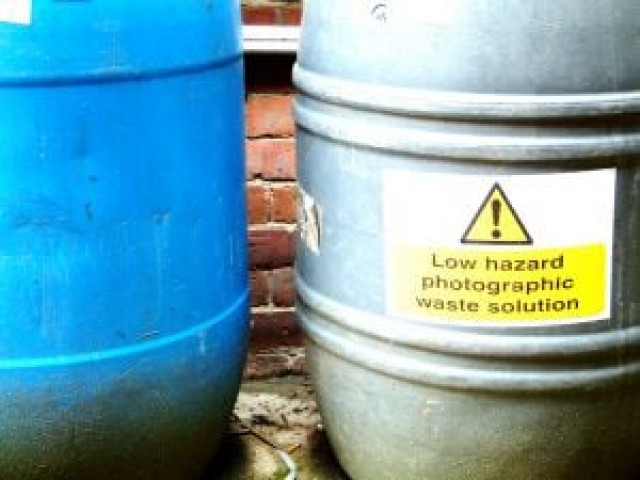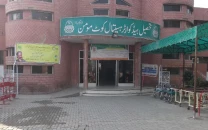Multan Road cluster: Industrial waste seeping into groundwater
EPD issues hearing orders to 200 units, but don’t expect it to stop soon.

Small industrial units on Multan Road are pouring hazardous chemical waste into the ground that could be contaminating the water supply in the area, according to Environment Protection Department (EPD) inspectors.
Some 200 of these units were issued hearing notices under the Pakistan Environment Protection Act (PEPA) on Wednesday for improper disposal of waste, but they continue to dispose of effluent into unlined pits up to 100 feet deep. The EPD conducted an eight-day survey of the dense industrial region between Thokar Niaz Beg and Mohlanwal in June. The number of small manufacturing units for paint, pesticides, textiles and pharmaceuticals, tanneries and spare parts workshops in the area has gone up from 60 in 2008 to over 230, said an inspector.
“Most of them make pesticides and pharmaceuticals,” said Yasir Gul. “They discharge chemical waste 80 to 100 feet below the ground. This has led the groundwater quality to deteriorate.”
Back in 2008, he said, “The waste disposal wells were lined with concrete to stop chemicals from seeping into the groundwater. But the number of units has more than tripled so the situation is much worse now.”
The hearing notices ask the units to dump their waste into pits lined with concrete or concrete tanks and to empty them into Hadyara drain.
The chemical waste would then instead end up polluting the Ravi. “They have to dump the waste somewhere,” Gul said.
Four units were disposing of waste safely, he said. One of these is FMC Pesticides. Ali Riaz, a plant manager, said the safe and proper disposal of chemical waste cost the company Rs10 million a year. “The waste is sorted into three types and sent to an EPD-certified incinerator, which burns it within 15 days,” he said. The ash is then mixed with cement to make bricks, he added.
The manager of one textile plant argued that the EPD had no grounds to issue a hearing order against the unit.
“Our waste is not hazardous,” he said. “In fact, nearby farmers want to lay a pipeline from our tank so they can use the waste to irrigate their crops.”
Another EPD officer said that the department did not have the authority to take strong action against industrial polluters. The first step is the issuance of a hearing order, he said, which gives violators one week to take corrective measures. If the violator does not respond, he is given another 15-day notice. Failure to respond to that means EPD inspectors can fine them and seal the unit. “The whole process takes about three months,” he said.
Multan Road resident Waseem Lodhi said that he believed that the water in the region was causing stomach illnesses.
He said dysentery, diarrhoea and eye infections were rampant in the area.
Sources in the EPD said that the they drinking water in the Multan Road region had not been sampled since it was tested for arsenic levels in 2007, and even that test was likely inaccurate.
Published in The Express Tribune, July 17th, 2011.



















COMMENTS
Comments are moderated and generally will be posted if they are on-topic and not abusive.
For more information, please see our Comments FAQ